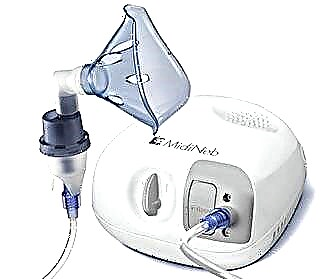 The pathological process usually involves the palatine tonsils, which are one of the largest lymphoid formations of the lymphadenoid pharyngeal ring. Angina of the unpaired lingual tonsil is much less common and, unlike classic tonsillitis, is more typical for middle-aged and elderly patients, and not for children.
The pathological process usually involves the palatine tonsils, which are one of the largest lymphoid formations of the lymphadenoid pharyngeal ring. Angina of the unpaired lingual tonsil is much less common and, unlike classic tonsillitis, is more typical for middle-aged and elderly patients, and not for children.
It proceeds in different ways depending on the form of clinical manifestations and requires compulsory treatment. How can you recognize and how should you treat inflammation of the lingual tonsil?
Reasons, flow options
The lingual amygdala is located in the mucous membrane of the root of the tongue and, together with other elements of the Pirogov-Valdeyer lymphoepithelial ring, performs a protective function - it can be considered as a kind of "immune barrier" on the way of harmful agents. It is small in size and, in the absence of pathological changes, is not felt when swallowing or talking.
Angina (tonsillitis) of the lingual tonsil can occur in isolation, in which case other tonsils are not involved in the pathological process; it can also be observed as part of the clinical picture with generalized lesions of the lymphoepithelial ring. Statistical indicators indicate that the number of episodes of tonsillitis sore throat is greater in adult patients, but there is also a risk of getting sick in children of any age group.
Why does the inflammatory process develop in the area of the lingual tonsil? Provocateurs are pathogenic microorganisms (staphylococci, streptococci, etc.). Anamnestic data (information about the events preceding the onset of symptoms of the disease) usually indicates the presence of trauma to the amygdala, which can occur as a result of:
- Eating (injury from a bone or other sharp fragment).
- Ingress of a foreign body with sharp edges into the oral cavity.
- Surgical intervention in the oropharynx area (for example, tonsillectomy, or removal of the palatine tonsils).
The likelihood of odontogenic infection cannot also be excluded - it means the spread of pathogenic microflora from foci of pathological changes in the teeth or tissues immediately adjacent to them.
Inflammation of the amygdala can be caused not only by the flora of the oral cavity and odontogenic foci, but also by exogenous flora on the surface of foreign bodies.
At the same time, a concomitant violation of the sensitivity of the mucous membrane is significant (which is not associated with angina of the lingual tonsil, but could cause the damage to go unnoticed), as well as impaired swallowing, haste during meals. In addition, the degree of reactivity of the immune system is important - if there is an immunodeficiency, the likelihood of developing an infectious-inflammatory process even with minor trauma is very high.
According to the type of flow of tonsillitis of the lingual tonsil can be:
- catarrhal;
- follicular;
- phlegmonous.
In this case, catarrhal tonsillitis of the lingual tonsil is considered the easiest. In the follicular form, lymphoid nodules, or tonsil follicles, are affected. If we are talking about phlegmonous inflammation, it means widespread purulent inflammation, in which the purulent contents are not limited to a specific cavity and literally permeates the affected tissues.
Symptoms
The condition of patients with angina of the lingual tonsil is regarded as moderate or severe - this is explained by a pronounced intoxication syndrome as a result of the development of an infectious and inflammatory process of a bacterial nature. Patients are worried about weakness, impaired appetite, headache, body aches, and an increase in body temperature to febrile or pyretic parameters (38–40 ° C). megamillions results
Symptoms include:
- Sharp pain when swallowing.
- Sharp pain when extending the tongue from the mouth.
- Significant increase in pain when trying to touch the root of the tongue.
- Violation of speech, nasal voice.
- Irradiation (recoil) of pain in the ear.
- Bad breath.
In patients, trismus is observed (the jaws are compressed as a result of tonic spasm of the masticatory muscles), due to which movement in the temporomandibular joint is limited. Swelling of the submandibular lymph nodes is also detected. Movement of the tongue (both voluntary and involuntary, such as pulling it during examination) causes severe pain. Examination of the pharynx (pharyngoscopy) is significantly difficult due to pain.
Evaluation of changes on the part of the lingual tonsil is carried out by means of hypopharyngoscopy, that is, studies of the lower part of the pharynx using a special laryngeal mirror. In this case, you can find: pronounced redness of the tonsil tissue; significant swelling and protrusion of the tonsil; purulent raids (more often point).
 In the catarrhal form, the main signs are redness and swelling, in the follicular form, suppurating follicles in the form of white-yellow dots that shine through the mucous membrane can be seen. If the patient develops phlegmonous tonsillitis of the lingual tonsil, the affected area is sharply edematous, inflammatory edema also spreads to the epiglottis region, reaches the entrance to the larynx. Tonsil tissue is infiltrated (saturated) with purulent exudate.
In the catarrhal form, the main signs are redness and swelling, in the follicular form, suppurating follicles in the form of white-yellow dots that shine through the mucous membrane can be seen. If the patient develops phlegmonous tonsillitis of the lingual tonsil, the affected area is sharply edematous, inflammatory edema also spreads to the epiglottis region, reaches the entrance to the larynx. Tonsil tissue is infiltrated (saturated) with purulent exudate.
If a common form of the inflammatory process is observed, the tongue is also affected (glossitis occurs, abscess of the root of the tongue), in rare cases, phlegmon (diffuse purulent inflammation) of the floor of the mouth develops.
The inflammatory process in the area of the lingual tonsil can be life-threatening.
Extensive edema in the phlegmonous form of the disease can cause stenosis (narrowing of the lumen) of the larynx. With stenosis, the permeability for the air flow decreases until it stops completely, there is a sharp violation of breathing, threatening asphyxiation (suffocation).
Mode requirements
When a small child or an elderly person is sick, there is a risk of complications or they have already been identified, hospitalization is required in a hospital department. If home treatment is permissible, it necessarily includes strict bed rest during the fever period and room rest, without exertion, until final recovery.
The patient should be isolated from healthy family members, especially if there are small children among them, persons with immunodeficiency states of any etiology. Separate dishes, bed linen, towels are allocated for him.
A gentle diet is required. Food should be chosen so that it does not irritate the mucous membrane - dishes should be excluded:
- sharp;
- pickled;
- crumbling.
Preference is given to products with a liquid or semi-liquid consistency that are easier to swallow, as well as food in which there are no small fragments. For example, if a patient is offered soup, it is better to wipe the vegetables rather than cut them into pieces.
Treatment
Conservative treatment involves the use of methods that exclude surgery. This is the most gentle method, which, nevertheless, does not always remain the only treatment option - there are clear indications for surgical manipulations, and they cannot be ignored with tonsillitis of the lingual tonsil.
Conservative therapy for angina of the lingual tonsil includes:
- Antibacterial drugs.Broad-spectrum antibiotics (Amoxicillin, Cephalexin) are prescribed in tablets or injections.
- Detoxification measures. If the patient's condition is relatively satisfactory, detoxification is achieved primarily through plentiful warm drinks (water, fruit drinks, fruit drinks, weak tea). In severe cases, infusion therapy (saline solutions, intravenous glucose) is needed, which is carried out in a hospital.
- Hyposensitizing therapy. Includes anti-allergic agents (Cetrin, Desloratadine); today it is believed that it is advisable to use it only for patients who have a tendency to allergic reactions.
- Antipyretic therapy. These are non-steroidal anti-inflammatory drugs (Paracetamol, Ibuprofen); are used in age-related dosages in order to reduce body temperature with a significant increase (more than 38–38.5 ° C). These are exclusively symptomatic drugs, they cannot be used routinely to prevent the onset of symptoms. They can also be indicated as a pain reliever for severe sore throat that cannot be relieved by topical remedies.
- Local therapy. These are home remedies, as well as pharmaceutical sprays for irrigating the mucous membrane and solutions for rinsing the oropharynx, which include antiseptics, anesthetics and anti-inflammatory drugs. A solution of salt, a decoction and infusion of chamomile, calendula, Hexasprey, Tantum Verde, etc. are used.
There are notes on the use of local remedies: sprays are not used before the age of 3 or even 5 years due to the risk of developing laryngospasm (laryngeal spasm); compresses on the area of the submandibular lymph nodes are applied only as directed by a doctor at normal body temperature.
Treatment of inflammation of the tonsils at the root of the tongue takes about 5-7 days. The course of antibiotic therapy is from 7 to 10-14 days and cannot be interrupted on your own.
It should be completed even with a significant improvement in the condition, otherwise there is a risk of the formation of resistance (resistance) of microorganisms, reduction (repeated episode) of the disease. Rinsing and other topical procedures begin immediately when symptoms appear, the duration of use depends on the type of inflammatory process.
The intervention of a surgeon is required if an abscess (a cavity filled with pus) has formed in the area of the tongue root. Having chosen the method of anesthesia most suitable for the patient, the abscess is opened. The operation is carried out only in a specialized hospital, where you can find out the presence of contraindications, observe the patient.



